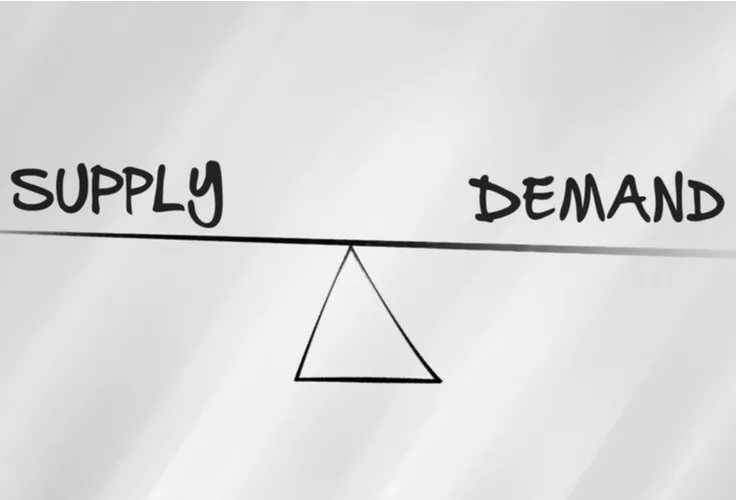When Does the Cost of Inventory Become an Expense?
Manufacturing products and storing those products in warehouses will produce costs for a company. The raw materials used, the equipment in operation, and the workers who may touch the inventory are all considered business costs. How this cost is calculated in accounting practices is based on what is done to the inventory.
A business acquires inventory carrying costs as the products move throughout the supply chain, whether the company services customers or sends the inventory to distributors and retailers.
So, when does the cost of inventory become an expense? Only when the inventory is sold to customers. Otherwise, the inventory that is still in the possession and control of the business is considered an asset, and the carrying costs are absorbed by the company for doing daily business.
Monitoring the cost of carrying inventory comes with advantages and disadvantages. Your business’s role in the supply chain will have an impact on whether you consider carrying costs as an expense. Tracking products through the supply chain allows your company to determine where these costs are being incurred. Then you may find ways to lower waste. However, it can be confusing to know what to include as costs or expenses when you haven’t determined which inventory management system to use, such as a perpetual inventory system.
WHAT ARE INVENTORY CARRYING COSTS?
The cost of carrying inventory includes everything that a business does to store and manage products anywhere, such as in stores, warehouses, or distribution centers. These costs help you determine whether your operations are running efficiently or if you are running into inventory risks that are making the costs higher than expected.
These costs may include labor, transportation, insurance, depreciation, and many others. They are usually split into four categories of capital costs, inventory service costs, inventory risk costs, and inventory space costs.
- Capital Costs: This cost includes money spent on products, such as the acquisition of products or raw materials to make the goods. It also includes finance charges such as loan fees and interest.
- Inventory Service Costs: These costs focus on money spent within the warehouse to hold the goods, such as inventory management services, taxes, insurance, and any hardware investments.
- Inventory Risk Costs: Inventory risk costs focus on anything that may harm or lower the value of the product. Depreciation, damage, obsolescence, poor record-keeping, storing inventory for too long, and theft leading to inventory shrinkage are considered risk costs.
- Inventory Space Costs: Space costs include money spent to lease or own the physical warehouse property and its upkeep. Inventory carrying costs may include the mortgage, utilities, security, and administration, as these costs may be variable or fixed.
To calculate the total cost of carrying inventory, a carrying value formula is used. To perform this calculation, you take all the costs mentioned above and divide by total inventory value, then multiply that by 100 to obtain a percentage.
So, you would add capital costs + inventory service costs + inventory risk costs + inventory space costs to obtain the inventory carrying cost total.
Next, calculate total inventory value by taking inventory costs and multiplying this figure by available stock items (inventory costs x stock of available items in the warehouse).
Take the inventory carrying cost figure and divide it by the total inventory value, then multiply it by 100: (inventory carry cost / total inventory value) x 100.
The resulting percentage is how much the company is spending based on the total inventory value. Usually, you want this figure between 15% to 30% for the carrying value when comparing the percentage to your profits.
WAYS TO MINIMIZE CARRYING COSTS
Always keep in mind that the costs to carry inventory will never be zero. However, you want the figure to be low without harming your operations. Here are several avenues you could take to help lower your costs.
Reorder Point
Understand when you need to reorder products in the right quantities. Ordering too many products or too little inventory at the wrong times may lead to unfulfilled orders or increased product waste, which raises costs. Demand forecast planning is a way to evaluate previous sales history and predict future demand.
Minimum Order Quantities
Suppliers usually have a minimum order quantity (MOQ) limit when manufacturing products. They typically send these batches to customers to keep their expenses stable. However, you may have the opportunity to renegotiate the number of products you receive if you need less inventory than the MOQ but will order more frequently. This could help keep inventory costs low by having higher turnover rates.
Overstock Prevention
Perhaps you jump on deals and discounts from suppliers to get high-volume orders. While this may seem like a great option — since you’ll be ordering inventory less frequently — it could easily lead to overstock if the products aren’t leaving shelves quickly. So, avoid overstocking on inventory.
Eliminate Deadstock
Deadstock refers to any inventory that is not sold. A lack of customer demand and overstocking often creates deadstock. To prevent this issue, reevaluate demand forecasting and adjust inventory purchasing strategies. If you have deadstock on shelves, you could check if suppliers will take back the products, donate the products to receive tax deductions, or bundle deadstock items with best-selling products at a discount.
Decrease Supplier Lead Time
Improving supplier lead times can help reduce warehouse overhead costs since you are not spending more on labor and storage services by holding the products for longer periods. If you can obtain the products quicker, you may also be able to reduce the number of products in your order while keeping inventory turnover at manageable levels.
DISCOVER THE WSI DIFFERENCE
Understanding how inventory flows through your processes before being sold — and how much this movement costs your company — allows you to figure out how to make your operations more efficient. Here at WSI, we offer warehousing and distribution services as part of our 3PL logistics as we invest in the latest inventory management systems and tools.
Reach out to WSI to learn more.
About the Author

WSI Team
WSI is one of the largest privately held 3rd party logistics companies in the U.S. and spans a nationwide distribution network with global logistics reach.







